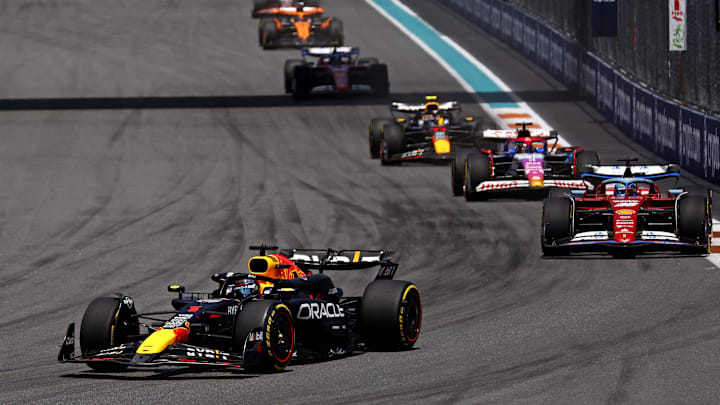2026 F1 Regulations to Address Engine Power Gaps with WEC-Style Equalization

The FIA plans to use the tools adopted by the World Endurance Championship (WEC) to even the power output of all cars in Formula 1. In recent years, Formula 1 has seen teams with varying engine power levels, leading to advantages or disadvantages that have unfairly influenced race outcomes.
The move coincides with Formula 1's preparation for the new 2026 regulations, which will see cars powered equally by internal combustion engines and electric motors. A key focus while drafting the new regulations is to prevent a repeat of the 2014 season, where Mercedes' vastly superior engine gave it an unchallenged advantage, allowing it to dominate the first eight years of the turbo-hybrid era.
While addressing the issue of significant power advantages, it's equally important to consider the disadvantages faced by teams with less powerful engines, like Alpine's current struggles in the ground effect era arising due to an underpowered engine in use since 2022. Ensuring such teams receive the necessary support to remain competitive against their rivals is essential for a more balanced playing field.
In 2023, the Alpine case highlighted the absence of a standardized method for assessing the performance of Formula 1's complex power units. The Enstone team sought an exemption from the engine freeze, which began in 2022 and extends through next season, to close the performance gap with Ferrari, Mercedes, and Red Bull. However, the request was denied due to the lack of a universally accepted measurement system free from subjective interpretation, prompting discussions about adopting a model inspired by the WEC championship.
The lack of support to help Alpine improve its performance has led Renault, its parent team, to consider switching to Mercedes engines and becoming a customer team from 2026, potentially closing its power unit operations at the Viry-Châtillon facility. This move has stirred unrest among employees, resulting in protests, including a demonstration during the recent Italian Grand Prix.
As a result of the challenges, the preliminary draft of the 2026 sporting regulations includes the following consideration, as reported by Formulacritica.it:
“[…] Any engine manufacturer whose combustion engine power is more than 3% lower than the highest power recorded among all engine manufacturers will be granted additional development opportunities and updates”.
The WEC championship employs a Balance of Performance (BoP) system to equalize the performance of competing cars. This is done by adding ballast to increase a car's weight, thereby reducing its speed, and by imposing limits on the engine's maximum power output. To measure engine power, torque meters are used for hypercars, which directly assess the power output on the track by being mounted on the crankshafts.
Director of the FIA single-seater department, Nikolas Tombazis stated that torque meters similar to the ones used in the WEC will be adopted by Formula 1. He explained:
“To measure power, we will use much more accurate and sensitive torque sensors that are applied to the half-shafts of the cars. This will allow us to be very sure of what is being measured.
“The criterion is based on the difference in power, but we want to work with the engine manufacturers to better define these criteria and possibly expand them to other parameters.”
